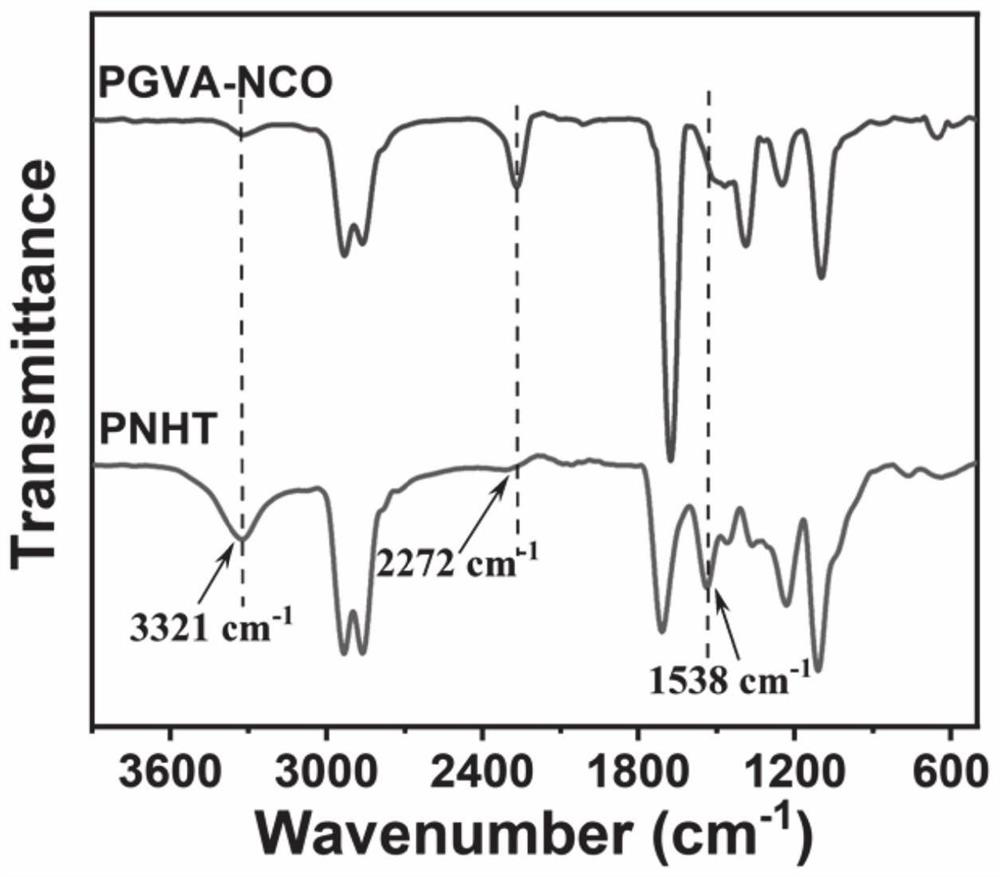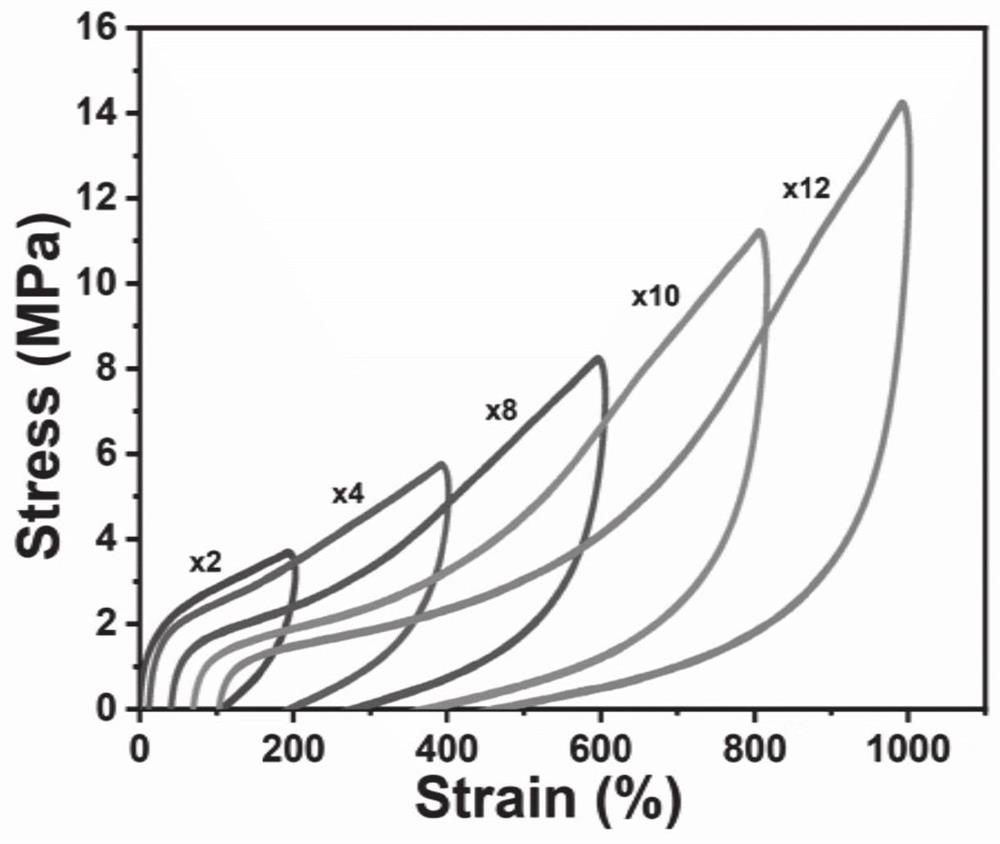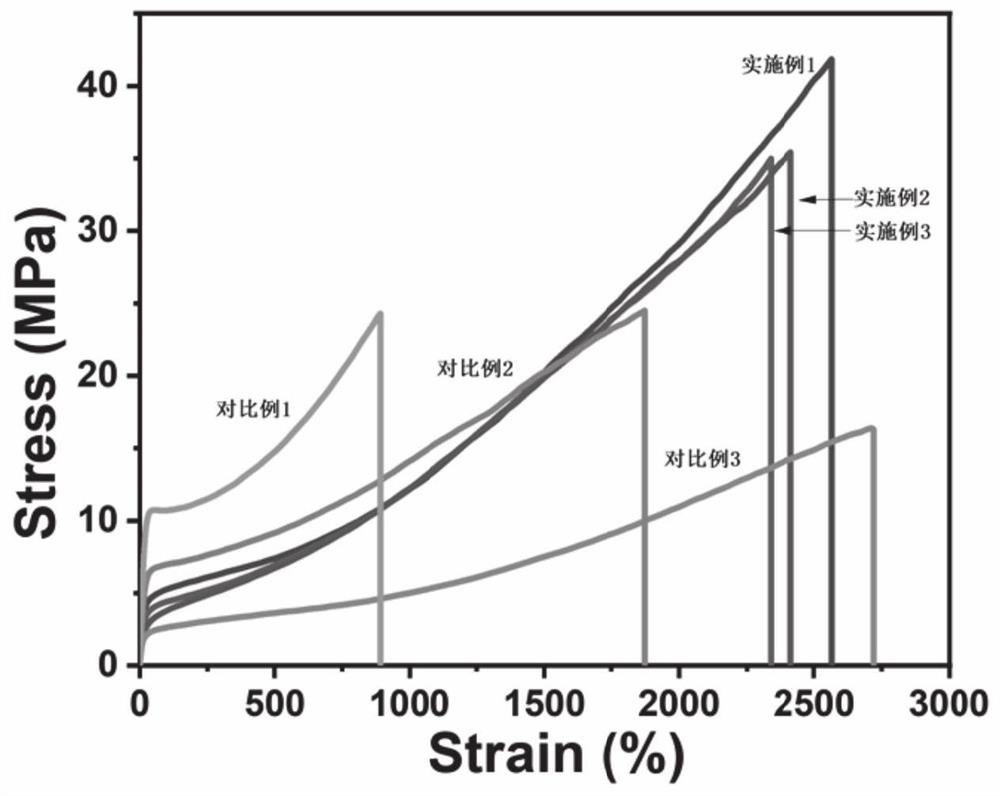Self-healing hyperbranched polyurethane with high mechanical strength as well as preparation method and application thereof
A technology of hyperbranched polyurethane and mechanical strength, applied in the preparation of polyurethane and the field of hyperbranched polyurethane network, can solve the problems of low mechanical properties of self-healing hyperbranched polyurethane, and achieve enhanced self-healing performance, strong practicability, and preparation method. simple effect
- Summary
- Abstract
- Description
- Claims
- Application Information
AI Technical Summary
Problems solved by technology
Method used
Image
Examples
preparation example Construction
[0054] The preparation method of hyperbranched polyester is:
[0055] Put glycerin and bismethylolpropionic acid at a molar ratio of 1:3 in a 250ml four-neck flask, add dibutyltin dilaurate as a catalyst, connect a water separator, a thermometer and a stirrer, and adjust the temperature under nitrogen protection. Raise to 140°C and stir, react for 3 hours, keep the temperature at 140°C, reduce the pressure to -0.1MPa to carry out polycondensation, and continue to react for 3 hours. A hyperbranched polyester is obtained.
Embodiment 1
[0058] Put polytetrahydrofuran, VA and isophorone diisocyanate with a molar ratio of 1:0.15:2 in a 250ml four-neck flask, use N,N-dimethylformamide as a solvent, connect a spherical condenser, a thermometer and Stirrer, under the protection of nitrogen, the temperature was raised to 50° C. to dissolve and stir the raw materials, and then the temperature was raised to 75° C. to react for 3 hours to obtain a prepolymer of isocyanate-terminated polyurethane. Then, slowly add 2,4,6-triaminopyridine to the flask in an amount of 15% of the molar weight of isophorone diisocyanate, and add the catalyst dibutyltin dilaurate in an amount of 0.05% of the mass of PBIS , after the raw material is completely dissolved, react for 1h, then add hyperbranched polyester wherein, the add-on is 65% of the molar weight of isophorone diisocyanate, then add tannic acid therein, the add-on is isophorone diisocyanate 20% of the molar amount of isocyanate, under the protection of nitrogen, continue to r...
Embodiment 2
[0061] Put polytetrahydrofuran, VA and isophorone diisocyanate with a molar ratio of 1:0.4:2 in a 250ml four-neck flask, use N,N-dimethylformamide as a solvent, connect a spherical condenser, a thermometer and Stirrer, under the protection of nitrogen, the temperature was raised to 50° C. to dissolve and stir the raw materials, and then the temperature was raised to 70° C. to react for 2 hours to obtain a prepolymer of isocyanate-terminated polyurethane. Then, slowly add 2,4,6-triaminopyridine to the flask in an amount of 20% of the molar weight of isophorone diisocyanate, and add the catalyst dibutyltin dilaurate in an amount of 0.05% of the mass of PBIS , after the raw material is completely dissolved, react for 1h, then add hyperbranched polyester therein, the add-on is 50% of the molar weight of isophorone diisocyanate, then add tannic acid therein, the add-on is isophorone diisocyanate 30% of the molar amount of isocyanate, under the protection of nitrogen, continue to re...
PUM
| Property | Measurement | Unit |
|---|---|---|
| molecular weight distribution | aaaaa | aaaaa |
Abstract
Description
Claims
Application Information
 Login to View More
Login to View More - R&D
- Intellectual Property
- Life Sciences
- Materials
- Tech Scout
- Unparalleled Data Quality
- Higher Quality Content
- 60% Fewer Hallucinations
Browse by: Latest US Patents, China's latest patents, Technical Efficacy Thesaurus, Application Domain, Technology Topic, Popular Technical Reports.
© 2025 PatSnap. All rights reserved.Legal|Privacy policy|Modern Slavery Act Transparency Statement|Sitemap|About US| Contact US: help@patsnap.com



